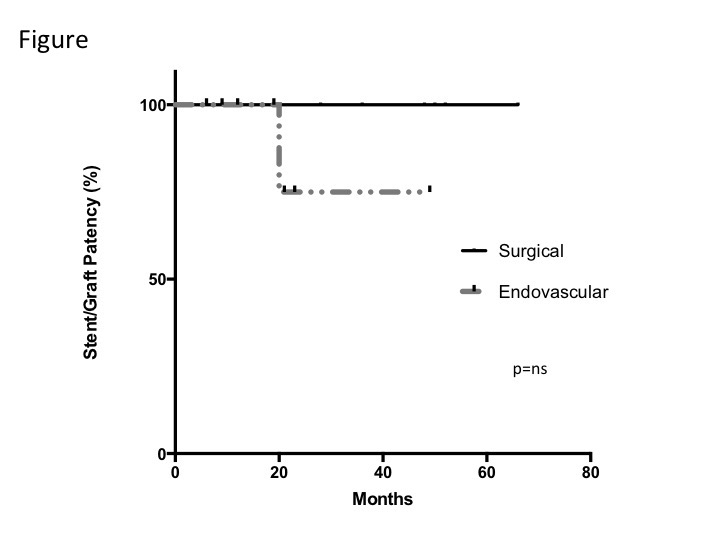Excellent Limb-Salvage For Extremity Radiation-Induced Vasculopathy Is Achieved With High Re-Intervention Rates
Tam T. Huynh, M.D., Erle S. Galia, Jacqueline Lewis, MSN, Lihua Lai, MSPA, Karen C. Broadbent, BSN, George T. Pisimisis, M.D.
University of Texas MD Anderson Cancer Center, Houston, TX, USA.
OBJECTIVES: The management of radiation-induced arterial occlusive disease (RA) in the extremity remains controversial. In this study, we examine the clinical presentation and outcome of patients who undergo revascularization treatment for RA.
METHODS: This is a retrospective study of consecutive patients who had treatment for severe RA involving the axillary, iliac or femoral arteries from 07/2010-05/2017, in a tertiary referral cancer center. We collected data from electronic health record of the patients including demographics, risk factors, revascularization treatment, and outcome. Our analysis included descriptive statistics, t-test and Fisher’s exact test for continuous and categorical variables, respectively. Statistical significance was at P<.05.
RESULTS: Nineteen index limb revascularization procedures were performed in 17 patients (13 female) with symptomatic severe RA in the study period. The median age was 56 (range 37-65). The median follow-up was 28 months (range 3- 60). The median interval time from radiation treatment to onset of limb ischemia was 8 years (range 1-35). Revascularization was done for chronic symptoms: disabling claudication, ischemic rest pain, or non-healing wound in 17/19 index limbs. Eight patients had primary endovascular interventions (Endo;Table). Surgical revascularization (Sx) was performed for 11 limbs in 9 patients (Table 1), including 2 who develop interval disease in the contralateral leg. All target lesions were TASC 3/4. One third of patients were never smoker. Method of revascularization was chosen based in part on surgeon's preference. Index revascularization was successful for 19/19 limbs, and all patients were alive at 30-days. One patient had an above-knee amputation 12 months after index femoral artery stenting. The overall limb-salvage rate was 95% (18/19), and overall stent/graft patency is shown in Figure. Both Endo and Sx groups had high re-intervention rates, 75% vs. 19%, respectively, p<0.03.
CONCLUSIONS: The results of our study show excellent limb-salvage rate for patients with severe extremity RA, albeit with high re-intervention rates. Surgical revascularization appears to provide more durable results than endovascular interventions but larger studies are needed to further evaluate treatment.
| Endovascular Intervention (Endo) | Iliac Stenting | Femoral Stenting | Axillary Stenting | ||
| number | 4 | 2 | 2 | ||
| Surgical Intervention (Sx) | Axillo-bifemoral Bypass | Aorto-femoral Bypass | Femoro-Femoral Bypass | Common Femoral Endarterectomy and Patch Angioplasty | Femoro-popliteal Bypass |
| number | 1 | 2 | 4 | 3 | 1 |

Back to 2018 Program




